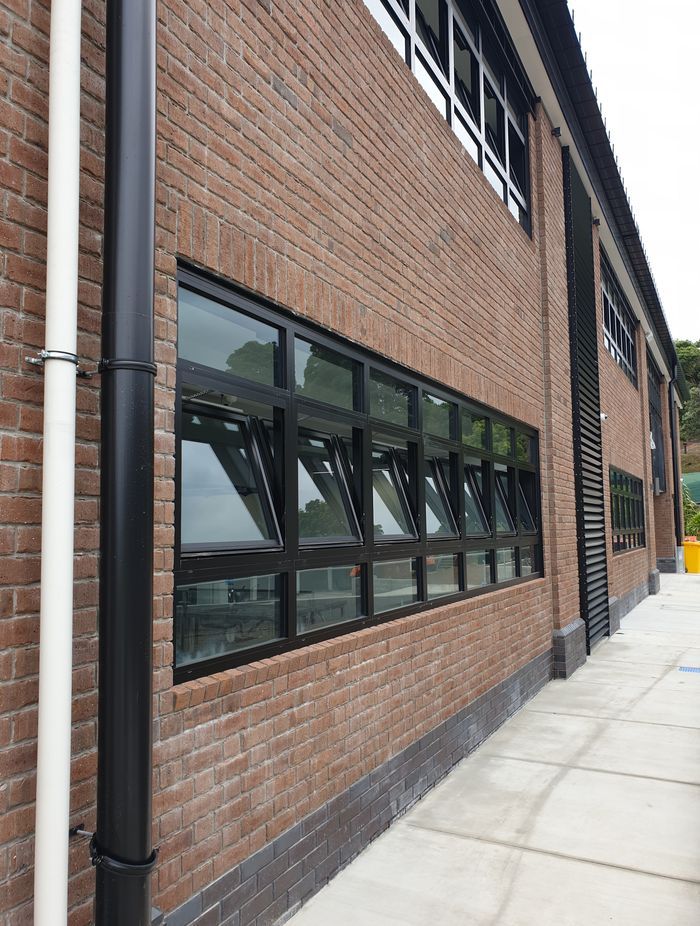Choosing the right automatic window opener: a specifier's guide
Written by
14 July 2024
•
5 min read


In residential and commercial buildings, hard-to-reach windows and skylights can benefit from having automatic window openers installed, with the added advantages of naturally ventilating the space and reducing the load on heating and cooling systems.
When used with automation and controls, automatic window openers can be managed with much more finesse compared to those with minimal control, which can only be fully open or fully closed.
“With automation, they can be opened to different percentages depending on the internal climate of the building or for security at night or after hours,” shares EllisCo Ventilation Manager Peter Millard.
Additionally, they can operate at different speeds to reduce noise and provide feedback on their status, such as the percentage of opening and any faults, to a building management or home automation system.
Each space requires a bespoke solution so we asked Millard what you need to know about choosing the right automatic window opener.
How to choose your actuator
When selecting actuators for a building, it's crucial to consider the specific application, control mechanisms, and the environment in which they will operate. Determine the purpose of the actuators, whether they will be manually operated, sensor-driven, or controlled by an automated system.
“It’s important to know how often they will be operating and what the building is being used for,” shares Millard. “For example, we use slow-moving actuators that create less noise in areas like libraries and universities.”
Chain drive style actuators are now highly favoured due to their discreet design compared to linear shaft or rack and pinion styles. They are also an excellent option for schools and commercial buildings with roller blinds, replacing the old mechanical shaft and lever systems that were once common.

“In a residential situation noise might not be such a problem unless they are controlled automatically by sensors or control systems,” says Millard, “but a small-sized actuator might be what is required.”
Climate and location also significantly influence the lifespan of an actuator. In coastal areas, actuators with stainless steel chains and nylon bodies are ideal to minimise corrosion. Incorporating rain sensors is also beneficial, as they can automatically close windows when it rains, providing peace of mind when you are away from the building.
In wet areas such as bathrooms, the location of the actuator is crucial.
“Actuators should only be mounted in the correct wet area zone the correct distance away from showerheads, baths and showers,” shares Millard. “Extra low-voltage actuators should be used in wet areas unless the window or skylight is at a suitable height.”
This careful consideration ensures the durability and safety of the actuators in moisture-prone areas.
Using an experienced supplier to obtain accurate information on the locations, sizes and weights of windows, as well as performance requirements, ensures that the correct type and size of actuators can be selected early in the project, says Millard.
“Proper planning on controller location, the wiring running between controllers, sensors and the actuators on the windows allows for a discreet overall system avoiding unsightly cable runs and connections.”
Most joinery and façade manufacturers excel at planning cable routes on or within their systems if they are provided with the correct information at the beginning of the project.

The benefits of automatic window openers
When automatic window openers are installed, there is often a huge improvement in indoor air quality. In residential renovations, adding operable roof lights or high-level windows allows for continuous ventilation, even overnight or when the homeowners are away, ensuring that the building can still breathe. This not only enhances air quality but also maintains a healthier indoor environment.
“Similarly in school classrooms that are updated, often the old mechanical window opening system has stopped functioning and is no longer practical to use; with new automation, high-level windows offer fresh air, and cross ventilation can still be used even when classroom doors are shut.”
The role of safety and compliance when selecting automatic window openers
Safety is crucial when selecting actuators, especially if they are mounted at a low height. In such cases, it's essential to use actuators with built-in entrapment protection, which stop and reopen if an obstacle is detected on the leading edge of the window. Additionally, actuators used as part of a smoke extraction system should be tested to certain standards to ensure they will perform as required when needed.
When selecting automatic window openers, specifiers should prioritise durability and reliability.
“Successful manufacturers and local suppliers like ourselves will not last long if they sell products that will not last or do what they are designed for so I am a great believer in looking at how long a supplier has been in business and at projects they have successfully completed.”
“When specifying, ask us for recommendations as there are a lot of different window actuator options and we are supplying these every day so we can help match the correct type of window opener for the project.”
Explore automatic window openers from EllisCo